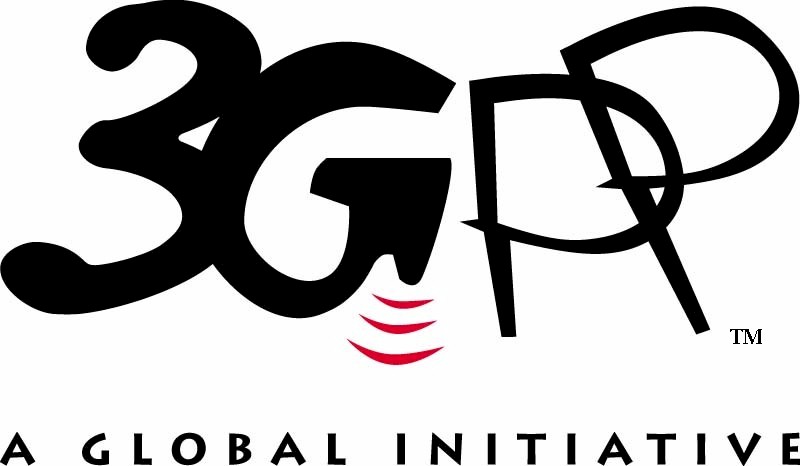
3GPP ePlenary Debrief from RAN#88e (29 June - 3 July 2020)
Hans van der Veen, NEC Laboratories Europe GmbH
Summary
This is a summary of 3GPP TSG RAN#88e. Because of the COVID-19 virus, the meeting was held as an electronic meeting (nearly 2700 emails and 3 conference calls; for comparison, RAN#87e had more than 1100 emails and no conference calls). However, unlike the March plenary, this meeting had a full agenda, including Rel-17.
General
RAN WGs and RAN plenary schedule Q3 and Q4
Because of COVID-19, all remaining 3GPP meetings in 2020 will in principle become electronic meetings. This might change fo F2F meetings if the situation changes, with at least 8 weeks' advance notice. The RAN plenary dates remain unchanged. At WG level there will be a major change, see below. All WG meetings will become multi-week electronic meetings and there will be no multiple meetings in each quarter. No firm decisions have been taken for Q1 2021 yet.
For the timeline, see attached image.
Rel-15
NR: UE Capabilities (Input documents: RP-200868, RP-200883, RP-201119; Summary: RP-201284)
There was no consensus on Rel-15 mandatory features without capability signalling. The split between companies is quite even.
Rel-16
Rel-16 Planning (aka 5G Phase 2)
Stage 1: frozen December 2018 without exceptions
Stage 2: frozen June 2019 with exceptions (all remaining Stage 2 work was completed by March 2020)
RAN1: frozen December 2019
RAN2 and RAN3: frozen June 2020 with 12 exceptions (see below)
Stage 3: frozen June 2020 with exceptions in CT and SA (see below)
ASN.1 and open APIs: frozen June 2020
RAN4: freezing target December 2020
Rel-16 Exceptions (Core part)
An exception means that the WGs can continue working on a topic for the next 3 months, on specific topics as indicated:
- RP-200625 Enhancement on MIMO for NR
- RP-201387 NR-based access to unlicensed spectrum
- RP-201343 NR positioning support
- RP-200608 Multi-RAT Dual-Connectivity and Carrier Aggregation enhancements (LTE, NR)
- RP-201322 Integrated Access and Backhaul for NR
- RP-201379 RF requirements for NR frequency range 1 (FR1)
- RP-200667 NR RF requirement enhancements for frequency range 2 (FR2)
- RP-201340 RRM requirement for CSI-RS based L3 measurement in NR
- RP-201341 NR RRM enhancement
- RP-201325 LTE/NR spectrum sharing in band 48/n48 frequency range
- RP-201135 29 dBm UE Power Class for LTE band 41 and NR Band n41
- RP-200995 High power UE (power class 2) for EN-DC (1 LTE FDD band + 1 NR TDD band)
In addition, in SA and CT the following work is not complete (some of this may be removed from Rel-16):
|
Name |
WG |
% Complete |
|
Stage 2 of enh2MCPTT |
SA6 |
0% |
|
Mission Critical system migration and interconnection |
CT1 |
5% |
|
Mission Critical Services Security Enhancements |
SA3 |
80% |
|
CT3 aspects of MONASTERY2 |
CT3 |
0% |
|
Charging Access of ATSSS |
SA5 |
70% |
|
Self-Organizing Networks (SON) for 5G networks |
SA5 |
75% |
|
CT1 aspects of VBCLTE |
CT1 |
0% |
|
Lawful Interception Report Rel-16 |
SA3-LI |
0% |
|
Network Slice Performance and Analytics Charging in 5G System |
SA5 |
60% |
|
Network Slice Management Charging in 5G System |
SA5 |
50% |
|
C3 aspects of LOLC (TBD) |
CT3 |
0% |
|
Network policy managementfor 5G mobile networks |
SA5 |
0% |
Rel-16 Closed Work Items and Study Items (excluding spectrum-related and conformance testing)
The following Rel-16 work was completed and the corresponding SIs and WIs closed:
NR
- SI: Study on radiated metrics and test methodology for verification of multi-antenna reception performance of NR UEs
- SI: Study on 7 – 24 GHz frequency range for NR
- WI core: Addition of UE measurements to enable OTA conformance testing
- WI core: Cross Link Interference (CLI) handling and Remote Interference Management (RIM) for NR
- WI perf.: Cross Link Interference (CLI) handling and Remote Interference Management (RIM) for NR
- WI core: 2-step RACH for NR
- WI core: UE Power Saving in NR
- WI core: 5G V2X with NR sidelink
- WI core: NR Mobility Enhancements
- WI perf.: Single Radio Voice Call Continuity from 5G to 3G
- WI core: Optimisations on UE radio capability signalling – NR/E-UTRA Aspects
- WI core: Support of NR Industrial Internet of Things (IIoT)
- WI core: Private Network Support for NG-RAN
- WI core: NG interface usage for WWC (Wireless Wireline Convergence)
- WI core: Add support of NR DL 256QAM for frequency range 2 (FR2)
- WI core: SON (Self-Organising Networks) and MDT (Minimization of Drive Tests) support for NR
- WI core: NR support for high speed train scenario
LTE
- WI core: Additional MTC enhancements for LTE
- WI core: Additional enhancements for NB-IoT
- WI core: Even further Mobility enhancement in E-UTRAN
Rel-16 Work Item Summaries (descriptions of features in the release after the work has actually finished)
These summaries describe what was really done (as opposed to the Work Items, that describe what was planned to be done)
- RP-201280 Cross Link Interference (CLI) handling and Remote Interference Management (RIM) for NR
- RP-201225 2-step RACH for NR
- RP-200912 UE Power Saving in NR
- RP-200855 5G V2X with NR sidelink
- RP-201274 NR mobility enhancements
- RP-201235 Optimisations on UE radio capability signalling – NR/E-UTRA Aspects
- RP-200798 Support of NR Industrial Internet of Things (IoT)
- RP-200733 Private Network Support for NG-RAN
- RP-200678 NG interface usage for WWC (Wireless Wireline Convergence)
- RP-200727 Add support of NR DL 256QAM for frequency range 2 (FR2)
- RP-200774 SON (Self-Organising Networks) and MDT (Minimization of Drive Tests) support for NR
- RP-200776 NR support for high speed train scenario
- RP-200887 Physical layer enhancements for NR ultra-reliable and low latency case (URLLC)
- RP-201019 Introduction of NR FDD bands with variable duplex and corresponding framework
- RP-201276 Additional MTC enhancements for LTE
- RP-201229 Additional enhancements for NB-IoT
- RP-200738 Even further mobility enhancement in E-UTRAN
- RP-200604 Support for NavIC Navigation Satellite System in LTE
- RP-200885 DL MIMO efficiency enhancements for LTE
- RP-200850 LTE-based 5G terrestrial broadcast
NR: IANA port handling (LSin: RP-200550, RP-200565, RP-201262; Summary: RP-201287)
RAN endorsed CP-201316 and CP-201317 as provided by CT. RAN3 will discuss whether and how to adopt the CT4 solution once it is completed.
NR: URLLC IIoT intra-UE prioritization(CR: RP-200690)
RAN1's CR to remove Intra-UE prioritization between DG PUSCH and CG PUSCH from Rel-16 was approved, but at the same time this was introduced into Rel-17 by revising the IIoT WID (see Rel-17 Enhanced IIoT below).
NR: Switched uplink in 38.101-1 (Approved company CRs: RP-200880, RP-201338)
The email discussion on switched uplink concluded to approve these CRs. The capability to indicate support of power boosting for CA case, and the RRC signalling to indicate whether such power boosting for CA case is allowed will be specified in Q3.
NR: Secondary DRX (Approved RAN2 technically endorsed CRs: RP-201198)
Secondary DRX is introduced in Rel-16. RAN4 is tasked to introduce the RAN4 core requirements for secondary DRX. The RAN2 CRs for secondary DRX were approved.
NR: Fallback FR2 (Postponed RAN2 CR: RP-201199; Not agreed WF: RP-201366)
Again, there was no consensus on this topic. This will not go back to WGs but stay in plenary.
NR: UE Capabilities (Summary: RP-201284; Approved company CRs: RP-201216, RP-201217)
The following proposals were endorsed:
- All Rel-16 UEs shall not be allowed to report sfn-SyncNRDC.
- RAN1 and RAN4 shall strive to complete all FFS on Rel-16 UE capabilities impacting RAN2 specification by the end of their first week of August e-meeting
- No extra effort is taken on specifying basic feature groups for certain scenario/purpose before finalizing UE capabilities for each WI in each WG.
- It is confirmed that each potential basic feature group (FG) has its own capability bit, and RAN2 finalizes UE capabilities specification in Q3 irrespective of whether a FG is part of basic feature groups for certain scenario/purpose or not.
In addition:
- Two company CRs were approved on UE capabilities based on RAN1, RAN4 UE feature lists and a long list of RAN2 CRs.



